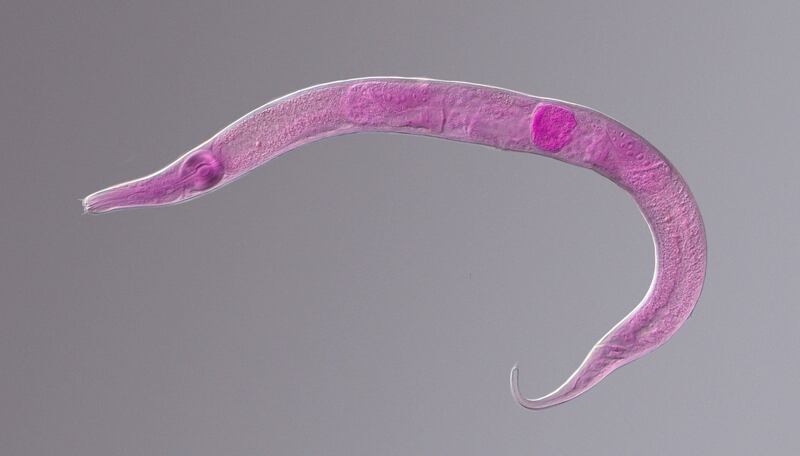“You wouldn’t believe what I just found in this lady’s brain — and it’s alive and wriggling,” Neurosurgeon Dr. Hari Priya Bandi said in a phone call to infectious disease expert Dr. Sanjaya Senanayake after removing a 3-inch parasitic roundworm from a patient, per The Guardian.
A 64-year-old Australian woman from New South Wales first went to the hospital in 2021 after dealing with pains of cough, fever, diarrhea and sweating at night, according to a Centers for Disease Control and Prevention study.
After several months, the woman's symptoms grew into forgetfulness and depression. After receiving an MRI scan, doctors realized there was something peculiar in the right frontal lobe of her brain.
“I’ve only come across worms using my not-so-good gardening skills. … I find them terrifying, and this is not something I deal with at all,” Bandi told CNN, adding that this is the world’s first live worm found living in a human brain.
How did it get there?
Carpet pythons are often the hosts to Ophidascaris robertsi roundworms and are native to New South Wales, where the woman lived.
According to the conclusion of the study, experts believe the woman must have contacted the roundworm larva by collecting vegetation in the areas where the carpet python lives. “We hypothesized that she inadvertently consumed O. robertsi eggs either directly from the vegetation or indirectly by contamination of her hands or kitchen equipment,” the study said.
Carpet pythons live with the parasite in their esophagus and stomach. Oftentimes, the roundworm will then plant its eggs in the python, which will then pass through the host’s feces.
“She initially developed abdominal pain and diarrhea, followed by fever, cough and shortness of breath. In retrospect, these symptoms were likely due to migration of roundworm larvae from the bowel and into other organs, such as the liver and the lungs. Respiratory samples and a lung biopsy were performed; however, no parasites were identified in these specimens,” Karina Kennedy, Canberra Hospital’s director of clinical microbiology and associate professor at the ANU Medical School, told Newswise.
She added that, “At that time, trying to identify the microscopic larvae, which had never previously been identified as causing human infection, was a bit like trying to find a needle in a haystack.”
Is this going to happen again?
It could, but luckily, parasites aren’t like viruses that are transmitted between people, like COVID-19 or the flu.
Senanayake said this case puts into perspective just how dangerous diseases passed from animal to human can be, as human populations encroach more and more on animal habitats.
“There have been about 30 new infections in the world in the last 30 years,” he said. “Of the emerging infections globally, about 75% are zoonotic, meaning there has been transmission from the animal world to the human world,” per The Guardian.
“It’s worth taking care when encountering animals and the environment by washing foods thoroughly and cooking food properly, and wearing protection like long sleeves so you don’t get bitten,” he said.


